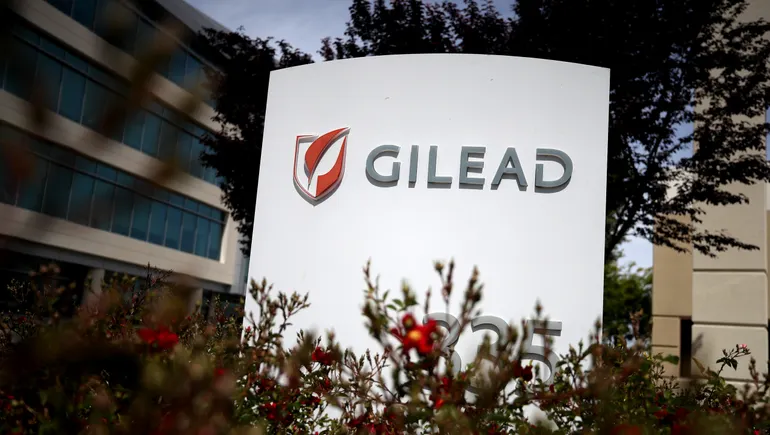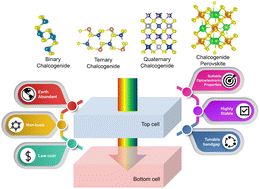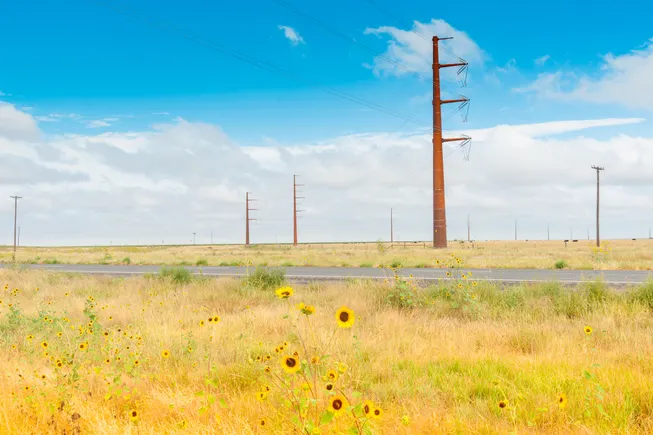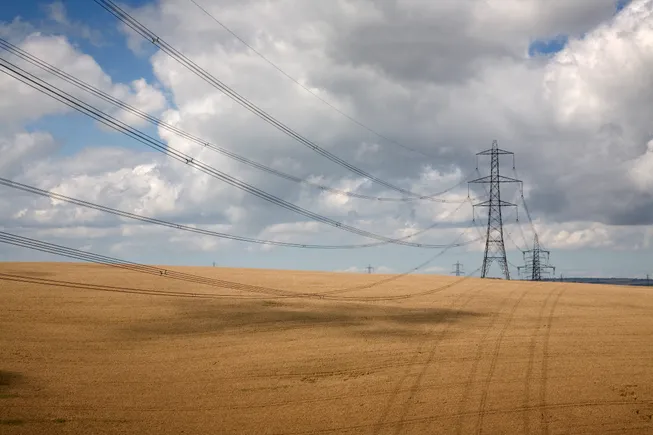In ‘Blood Vines,’ a Tale of Wine Fraud, White Zinfandel and Murder
When White Zinfandel burst onto the scene, it changed America’s palate. And it also sparked a ‘Succession’-like tale of familial strife, fraud and even a murder. [...] Read More... The post In ‘Blood Vines,’ a Tale of Wine Fraud, White Zinfandel and Murder appeared first on Wine Enthusiast.
Before Sutter Home’s White Zinfandel burst onto the scene in the 1970s, Americans didn’t drink much wine. But this sweet wine—made by mistake when a batch of dry White Zinfandel stopped fermenting—turbocharged the industry. By 1987, the style was the best selling premium wine in the country.
While the rosy-hued bottles were fixtures on dinner tables and at parties, the seemingly buoyant beverage sparked an infamous dark story, one involving fraud (to meet insatiable demand, some producers were passing off wine made with other grapes as White Zin) and the killing of one of California’s most famous grape brokers.
Chris Walker, an investigative journalist based in Denver, Colorado, learned about this story a few years ago and began to unravel the tale. What resulted is Blood Vines, a new nine-episode narrative podcast that dives into the saga. After going through public records, interviewing people familiar with the litigation and diving into what is one of the largest instances of wine fraud in American history, he cracked something in the case.
But beyond an industry scandal, Blood Vines is a remarkably human story about a family dynasty in peril. In this episode of the Wine Enthusiast Podcast, Walker joins Matt Kettmann, a writer at large and reviewer of wines from California, to discuss how he made the show.
More California Wine Coverage
- These are the top-rated wines from California.
- California winemaking is at a dangerous crossroads.
- Get to know California’s best unsung wine regions.
- The best wineries and more to visit in Lodi.
- A beginner’s guide to Mendocino wine.

From the Shop
The Best Wine Fridges
A wine fridge is the best way to ensure your wine is stored properly, and these attractive units allow you to show off your collection in style.
Episode Transcript
Transcripts are generated using a combination of speech recognition software and human transcribers, and may contain errors. Please check the corresponding audio before quoting.
SPEAKERS: Matt Kettmann and Chris Walker
Matt Kettmann (00:34):
Hi, this is Matt Kettmann, a writer at large for Wine Enthusiast Magazine. I’m joined today by Chris Walker, a longtime long form journalist who got into podcasting back in 2020 with this very popular podcast called The Syndicate about skydiving drug dealers in Colorado.
Chris Walker’s latest podcast is Blood Vines, the story of White Zinfandel, wine fraud and murder in California.
Chris is a journalist by background and he tuned into this story somehow. That’s what we’re going to find out. So Chris, welcome to the Wine Enthusiast podcast.
Chris Walker (01:20):
Thank you so much for having me on.
Matt Kettmann (01:23):
I’m a wine writer, but I don’t gather that you are a wine writer, necessarily. So I’m curious how you got into this whole thing. Maybe the best way to start is to just tell us a little bit about your background and how you got into being a podcaster and a journalist in the first place.
Chris Walker (01:39):
Sure. And you’re right, I am not a wine writer per se. I would certainly not be known as such. I’m an investigative journalist. I’ve been a journalist for almost 15 years now, and I mostly focus on investigations and long form narrative stories, and these have really run the gamut. I mean everything from hiking in the Andes with a team of rescuers trying to find some lost climbers in Argentina to embedding with an anti-government militia in southern Colorado.
So I’m always on the hunt for stories that make me go wow and haven’t been reported before. And story ideas can come from anywhere. It can be a line in a book that catches my interest. It can be from a conversation. And in this instance it was from a conversation.
So the genesis of this story idea actually goes back to a holiday gathering in California where I grew up in 2017 when one of the party guests mentioned that he was retiring after almost 50 years in the wine business.
So five decades is a long time, especially when it spanned a period when California really came into its own as a worldwide epicenter for wine production. So I thought to ask this soon to be retiree what some of the more memorable moments were during his five decade career.
He ticked off various stories, but the one that caught my attention, and he mentioned this almost in passing, is that there had been a lot of chatter in the early 1990s about a murder involving a well-known grape broker. I didn’t even know what a grape broker was.
Grape brokers, for those who are not familiar, are sort of a behind the scenes player in the wine industry. They help negotiate deals between vineyards and wineries that are purchasing grapes from those vineyards. So the story went that this victim of the murder was a prominent grape broker, but he wasn’t just sort of a large figure in the wine industry.
(04:01)
His murder had also been right before he was scheduled to testify in a wine fraud lawsuit. So the timing of this murder was quite suspicious, and the person telling me this tip didn’t actually know that many details about the story, and some of his facts turned out to be wrong.
But I was intrigued enough by this that I wrote down some of the names that he had mentioned in my phone. And later on when I checked the internet for reporting around this, I did find some old articles about it, but not too many.
And they were spread out over a long period of time, these sort of piecemeal short newspaper articles about the wine fraud investigation and later about the murder. But it wasn’t quite clear to me initially what the link was between the two, if any. And that didn’t become clear until I decided to—and this wouldn’t be the first time I’d done this—I wrote to someone who is currently an inmate and is in jail for some of these crimes, and he wrote back agreeing to talk to me. And so we started having phone conversations and that’s when I realized, wow, there’s a much larger story here and no one has ever explored this fully before.
Matt Kettmann (05:23):
And so that was back in 2017, and this is eight years later and your podcast just came out recently, so it took a long time to get there. Were you a wine drinker at least? I mean, did you have some knowledge of the industry at all? I mean, there’s a lot of particulars like wine brokers and stuff like that that are obscure, but did you have a basic knowledge of what wine was and how to enjoy it?
Chris Walker (05:46):
Yes. I mean, I’m certainly a casual fan of wine. I mean, for me, I feel like for a lot of people, certain kinds of wines have an emotional component to it based on their history. So I mean, my entry point to wine was I was studying abroad in Argentina when I was in college and spent some time in Mendoza.
So I have some really rosy memories of drinking Malbec and also even doing some shout out to Mr. Hugo’s bike tours. There was this guy that would fill your bike water bottles with wine and give you a map to various wineries. You didn’t have to sign any liability form whatsoever, and then you could go wine tasting at these different wineries around Mendoza.
Matt Kettmann (06:42):
That sounds great.
Chris Walker (06:44):
So that was sort of my entry point. And then my father is also a much more sophisticated wine drinker than I am, so he’s in a group with some friends that call themselves the cork dorks. They do blind wine tastings, and I’ve had the privilege to sit in on some of their meetings and have tried some really stellar wines, including some great silver Oak and Caymus wines. So I’m certainly a fan, but I hadn’t done any reporting in this arena until getting this tip in 2017.
Matt Kettmann (07:18):
Well, and it’s funny that your podcast revolves around not what you would call fine wine, but white Zinfandel, which is, I guess it’s celebrating its 50th anniversary this year of being created by Sutter Home basically as an accident, as your podcast figures out. But they brilliantly turned it into one of America’s most popular wine trends ever really.
And it introduced, really millions, to wine as an enjoyable product that wasn’t just some kind of hoity-toity thing. It democratized wine. Do you have any White Zin memories yourself? It’s even before my time really. I mean, I kind of vaguely remember it being around, but it was not something I was into even in my youth. But do you have any white Zin memories? Maybe your parents got into it here and there?
Chris Walker (08:11):
I didn’t before reporting this podcast. I mean, I’m 35 years old, and the white Zin fad had sort of fizzled out by the time I came of drinking age. So I mean, certainly rose was huge, but I’d never tried white Zinfandel actually until reporting this podcast.
But yeah, I mean, it’s sort of historical place is quite amazing. I mean, you mentioned that it introduced millions of people to wine drinking. I mean, one of wine enthusiasts competitors, Wine Spectator famously gave Sutter Home an award in 1994 for introducing more Americans to wine on the table than anyone in history. So it really was this gateway wine for lots of people, and its origin story is just incredible. I mean, we can get into the accidental creation too, if you want to.
Matt Kettmann (09:16):
Well, yeah, tell us just a brief synopsis of that, and then I’m curious. I mean, the reason this story existed was because it got so popular.
Chris Walker (09:23):
Correct, yes. So the context of White Zin’s popularity led to the fraud that’s at the heart of this podcast. So yeah, a quick synopsis of white Zinfandel.
Sutter home in the early 1970s was really a small struggling family winery. One of their winemakers, Bob Trinchero, was was actually making traditional Zinfandel, the red kind, and he was using a process called saignee to bleed off some of the juice to concentrate the flavor and color of Zinfandel.
And this is common as well. You can use that runoff juice and ferment it as rose. So it’s sort of the red wine becomes the big brother of the runoff juice that then becomes a rose.
And when he was fermenting some of the runoff juice in a batch in 1975, it got stuck, meaning the fermentation stopped and the alcohol, or sorry, the sugar stopped converting into alcohol.
And so he ended up with this wine that was lower alcohol and really sweet, and it was a mistake because he was trying to create a traditional dry French rose. Now he has this sort of half fermented sweet wine, and he sort of tossed up his hands and said, you know what? I don’t want this to be a total waste, so I’m just going to bottle this and sell it anyway, and we’ll see if anyone buys this.
Well, lo and behold, I mean, even six or seven years later, it’d become the top-selling wine in the United States. And so the white Zinfandel fad was born.
Matt Kettmann (11:11):
He tapped the Americans collective sweet tooth. I mean, even today people say they drink dry red wine. You ask him which wine they drink, and you’re like, well, that’s actually a little bit sweet. So then it got massively popular beyond Sutter Home. Other people were making it too, and everyone wanted to get in on the action, right?
Chris Walker (11:30):
So when Sutter Home created White Zinn, a bunch of other wineries sort of thumbed their nose at it saying like, oh, this is not going to catch on Trinchero. And Sutter Home could see that this was going to become huge. And so Trinchero did something really smart, which is he locked up as many contracts to buy Zinfandel grapes as he could find in California, so that by the time other wineries caught on and wanted to make white Zinfandel, they were sort of fighting for scraps. Whatever Zinfandel was left available, another winery got that.
So it’s important to note actually that Sutter Home is not part of the fraud that ends up being in this podcast because they had a steady supply of grapes. And as far as I could tell, so did Gallo, which made another popular white Zinfandel. They actually owned so many Zinfandel vineyards themselves, but for a bunch of other wineries, including the Robert Mondavi Winery, Charles Krug Delicato, which was at the time a big contract winery, they made wine for other brands. They had to source whatever was left.
And the economic consequence of this is that the price for Zinfandel spiked more than 500%. And this was challenging. If you’re trying to make three or $4 bottles of white Zinfandel, how do you do that if your ingredient just became so much more expensive?
Matt Kettmann (13:06):
Not only can you not find it because it’s all been locked up. If you do find it, it’s ridiculously expensive. So exactly. It’s a non-starter, really.
Chris Walker (13:15):
Right. So for those sort of observing what was going on, this created the ripe conditions for fraud, specifically by mislabeling cheap grapes as the more expensive Zinfandel.
Matt Kettmann (13:32):
And that’s what happened. A few players were involved, but it became kind of a runaway train a little bit. I mean, it seems like it got based on your podcast, it got a little bit more out of hand than anyone really thought about. It started as a couple of easy deals, and then all of a sudden it was a machine on its own
Chris Walker (13:51):
Right. And the reality is that it was quite widespread. There were multiple rings of bad actors doing this. The largest, which I only kind of mentioned in passing during the podcast was Fred Franzia, who passed away relatively recently, but the head of Bronco Wine Company, which famously bought the Charles Shaw label. So two Buck Chuck sold it. Trader Joe’s. This happened before the Charles Shaw days, but I mean, they were doing this around white Zinfandel, and I believe it was over a million gallons of mislabeled wine, which you can just imagine how many bottles that produced.
Matt Kettmann (14:38):
There’s a really, I think, interesting and salient point in the podcast in which one of the commenters is basically like who was being harmed?
So you’re basically selling this cheap style of wine that I think someone rightly says it doesn’t even really taste like Zinfandel. And then you have people mislabeling it. So obviously some of these producers are paying more for this grape that shouldn’t be as highly priced as what they’re paying, but at the end of the day, they’re turning around making a profit.
The consumer doesn’t seem to care at all. I mean, that was, I thought, an interesting point. What are your thoughts on that related to who was being harmed other than of course, the poor guy, it gets murdered in that whole family tragedy. Who is the harm here? Why do the feds start to pay attention?
Chris Walker (15:32):
Yeah, it’s a great question. I mean, it really comes down to, I think, a question for all of us. Why do we care what we’re drinking? Do we need to know that it was a specific grape? If we still enjoy a knowingly mislabeled wine, what is wine drinking for? Is it for the experience? These were some of the justifications that were used for some of the bad actors, some used by some of the bad actors in this story.
But one of the things that I touched upon in the podcast is that the timing of this was actually quite precarious because in some ways, it threatened the integrity of California’s entire wine industry and what the industry at large was trying to accomplish at the time. So white Zinfandel, even by having Zinfandel on the label, was technically a varietal wine. And at the time, this is about 10 years after the judgment of Paris and California really trying to solidify itself as this respected producer of wines.
And in 1983, the wine industry at large kind of went all in on this, what was largely a marketing tactic, but was so successful that it’s how most of us even view and understand wine today, which is that they upped the requirements for the percentages of grapes that needed to go into a varietal wine to be labeled by that grape type.
So in 1983, it went from 51% to 75%, and all of this was meant to really champion specific grapes and to create markets around those grape types for the wine that California was selling. So all of that is based on transparency and trust: if you buy this bottle of Cabernet Sauvignon, it has at least 75% Cabernet grapes.
So the idea that you would have such rampant mislabeling going on as California was trying to do this was incredibly threatening and was something that I found even in my interviews with, I got one guy who was part of the mislabeling of White Zinfandel during this time period to go on the record and serve.
Those larger concerns were completely off his radar, but it was certainly on the radar of state regulators and prosecutors who are trying to protect this burgeoning industry in California. So you can understand why it was threatening if this got too out of hand at the time.
Matt Kettmann (18:18):
Yeah, I mean, California vintners are after decades post-prohibition of putting a bunch of different grapes in one wine and calling it burgundy or cab or whatever. Now they’re actually trying to get serious and say, look, no, we’re making this making serious wines. We’re trying to compete on a global stage, and you got a bunch of yahoos over here selling these weird grapes as Zinfandel and kind of messing with the whole market. Before we get more into the story, I’m curious a little bit more about the production of this story. You learn about this in 2017. How do you start reporting this? Are you even a podcaster in 2017, or was this started as a writing story that became a radio story? What was the process to tracking all these people down? Because you have a wealth of interviews, clearly a wealth of research that goes into this, and you end up talking to some of the major players, at least the ones that are still alive. Tell us a little bit about that path to taking this from cocktail party tip to actual finished podcast eight years later.
Chris Walker (19:19):
Yeah, it’s a great question, and yes, while I did initially hear this tip in 2017, I actually didn’t start looking into it until 2021. I have this document on my computer with all of these different story ideas, and it’s what I return to whenever my plate clears and I’m ready for the next project.
Matt Kettmann (19:42):
Some of these, I have a similar list. I can never clear my plate though.
Chris Walker (19:46):
That’s the challenge, right? So yeah, I actually didn’t start working on this in earnest until 2021 and talking to the jail inmate—I’m not going to reveal who this is because it’s a bit of a spoiler—but talking to him and getting his participation was a big piece of this. And another main character sort of as a foil in the podcast is the lead prosecutor on the case who even helped other law enforcement personnel get interested in the case, because we were talking earlier about how you could shrug off some of these crimes. There’s a kind of funny moment where the ATF was alerted of this, the Bureau of Alcohol, Tobacco Firearms and Explosives, and the agent who was assigned that case was not interested in pursuing this.
Matt Kettmann (20:41):
Please help me get rid of this case, is kind of what he said to the prosecutor, right?
Chris Walker (20:44):
Yeah. So he goes to the prosecutor looking to get it tossed out, and then there’s this great irony in that the prosecutor is like this wine snob. So he takes a look at the case and he is like, oh, no, actually this is really important. We need to pursue this. And so he was another huge component.
His name is Steve Lapham, and I actually found out about him. I discovered him through another book I happened to read. It’s a great book called Tangled Vines by the journalist Frances Dinklespiel. And her book is primarily about an arson of a wine warehouse in Vallejo, California, in 2005. And the main prosecutor on that case was an assistant U.S. attorney named Steve Lapham. And in one chapter, she sort of diverges from the arson case and mentions how he was the lead prosecutor in these great mislabeling scams in the early 1990s and late eighties.
(21:48)
So that’s how I knew that Steve Lapham was the guy that I needed to reach out to.
And I had a really lucky break—and I swear this is the only time this has happened in my career—Lapham at the time, he’s since retired, but he was a superior court judge in Sacramento, and judges are tough interviews to get as a journalist. They usually don’t get permission to speak with reporters.
But when I contacted his press handler, she had actually listened to my previous podcast, which came out in 2020, called The Syndicate, which is about skydiving drug smugglers in Colorado. And so she said, oh, I thought I recognized your name. I listened to the syndicate and really loved it. And so the press handler was biased to help me get permission to interview Lapham, which ended up being absolutely key.
He’s a key part of the podcast, and I was really fortunate to have his participation, and there were more pieces that fell into place, but that was him and the guy that I spent many, many, many hours over the past four years interviewing from jail were major pieces of this.
Matt Kettmann (23:06):
Yeah. I guess we should clarify here. There’s basically two sets of crimes that the podcast covers, right? Without spoiling it. I mean, there’s the wine fraud part of it, and then there’s a resulting murder that happens basically because of simmering bad blood from what happened during this whole situation. Is that a fair way to describe it?
Chris Walker (23:32):
Yes, that’s definitely a fair way to describe it. And yeah, the victim of the murder was this prominent grape broker. As I mentioned earlier, his name was Jack Liccardi, and he got wrapped up in this because one of his sons who was running a lot of the day-to-day operations of his grape brokerage was one of the main people involved in grape mislabeling along with some other characters. And he was actually doing this right underneath his dad’s nose.
Matt Kettmann (24:04):
A lot of people get caught in the fraud, and this son does do some time for that. But at the end of the day—and he was not a good guy, I mean, you get into that, he was clearly doing things behind his father’s back that he shouldn’t have been, it was very obviously I think illegal—but by the end of the podcast, the punishment he had to endure versus what some of the other people had to endure seemed like he did get kind of the raw deal. He took a lot of punishment in the faith, whereas some other people got off with some writing of checks and not having to go to meetings for a couple years.
Chris Walker (24:41):
Yeah, exactly. Including Fred Franzia, who I mentioned earlier, and that’s because the son’s name was Michael Liccardi who we’re talking about. He’s the only one who really fought the charges against him, and he kind of fell into this hole where everyone else took plea deals from the government, and in exchange for those plea deals, they gave testimony in the case against Michael. And so he’s the only one not participating with the prosecutors, and everyone else is just scapegoating as much as they can.
Michael is not innocent completely by any means, but everything sort of got shoved onto him, and he ultimately lost his case. And there’s an aspect of our justice system, which may not be fair depending on who you talk to, called the trial penalty is what this is known as, which is if you reject a plea deal and you decide that you’re fighting the government and you’re going to take your case to trial, and then you lose, then the sentencing tends to be harsher than what was initially offered to you in the plea deal.
So yes, he ended up going to jail and spending, I think more than five years in jail, and everyone else got off with way less than that, even if they were, are equally, if not more culpable
Matt Kettmann (26:17):
Without giving away anything about the murder and who’s implicated there, the guy who we end up finding out who did it. He doesn’t seem like the smartest guy in the world. In fact, he doesn’t seem super intelligent at all. And yet it took kind of a long time to catch this guy. And so I’m curious, based on all of your research, was that just bad police work? Did he really do a good job of covering his tracks? Was it just people wanting to believe other things were true? I mean, what was your end feeling about why it took so long to figure out who actually did this?
Chris Walker (26:56):
Yeah. Well, yeah. I mean, he’s quite a character. He also defended himself in a first degree murder trial, which is, by the way, a terrible idea. One of the other pieces of reporting that fell in my lap, which actually was a consequence of him defending himself in a murder trial, is that by acting as his own attorney, he was given all of the prosecution’s discovery material. And so this included hundreds and hundreds of pages of internal police reports detailing essentially a play-by-play of the police’s investigation. So that’s a rare kind of goldmine to receive As a reporter, I could see what had happened on a week by week basis, including the police chasing, I mean, the police work was not impeccable, but it wasn’t terrible. To answer your question about why it took so long, part of it is that it was a preponderance of circumstantial evidence.
(28:04)
So there was no proverbial smoking gun. So they didn’t have any one piece of evidence that proved beyond a reasonable doubt that he was the perpetrator. So that’s part of it is all of these things run through the analysis at a district attorney’s office of, do we have enough evidence to get the jury to get there beyond a reasonable doubt to convict?
And it just took a really long time, and it didn’t really come together until there was this actual financial crimes investigator who got involved in the case and was finally able to subpoena the correct bank records he needed and to really paint a financial picture of what was the financial incentive in this murder.
And that’s also why the suspect got charged with a sort of rare so-called special circumstances charged in California of killing for financial gain. So he was even up for a potential death penalty if he was found guilty, which makes it even more incredible that he decided to defend himself rather than accept any illegal representation.
Matt Kettmann (29:19):
I don’t listen to a lot of podcasts. The kind of podcasts I listen to are the ones that this is a narrative driven story, and not just a bunch of people blabbing at each other, but a narrative driven story of where you’re trying to reach a conclusion.
And I’ll say that most of these kind of true crime podcasts don’t ever actually reach the conclusion. You listen for about six or seven episodes, then they’re not going to actually figure this out, are they? And then they don’t. And yours actually reaches a conclusion, I’m not going to ruin it for people.
But you get to the end, and in fact, you have to record an entire last episode because the guy eventually says he wants to spill more beans than have been spilled. So I mean, just as a journalist, as a podcaster, that must feel pretty interesting, pretty cool. You must be proud of actually being part of finding some catharsis and some conclusion for the people involved. In this case,
Chris Walker (30:17):
What you’re referring to is there’s a confession to some of the crimes mentioned in the podcast from the jailhouse inmate that I had been interviewing the entire time. It was shocking. I mean, my producers and I were finishing our edits on the series.
It was going to be a seven episode series, and we’re like, okay, we need to add on another episode to address all of this. Yeah, I mean, I could not have seen it coming, but I think what meant the most to me was that through this confession, he was not only filling in blanks for me, but for the people that lived through these traumatic events, including family members of the victim, Jack Liccardi. So to be able to give them some catharsis, that’s just not something that I’m able to do all the time as a journalist. So I mean, I’m really happy to hear that you as a listener got some benefit from that, but it meant even more to me to be able to provide that to some of the family members around these really traumatic events.
Matt Kettmann (31:38):
Do you think that there are more beyond the murder that seems solved, wrapped up, et cetera, but as far as the wine fraud goes, do you think there were other players who should have been implicated way back when? I mean, do you think there were a number of people that, aside from the ones that actually paid some fines, but there were other ones that just kind of skirted under the radar and got away with it?
Chris Walker (32:06):
I know there are, so this is rather incredible, but credible. So the podcast has been out behind, it’s been out but behind the paywall since February. So there’s been a chance for folks to listen to it that have paid to listen behind the paywall. And I got an email from a woman in the Central Valley who let me know that it’s been the talk of the farming communities there, and she let me know, and I am still looking into this more and speaking with her, so I won’t reveal too much, but she revealed that her uncle was also involved in some of this grape and this labeling, and that her dad and her uncle got into a scuffle, and the uncle sucker punched the dad, and then he died the next day, and they were arguing about grape mislabeling.
(33:09)
So the idea that there could be another sort of tangential death to all of this is rather incredible. But on top of that, there were some of the folks that I interviewed for the podcast. A big question was always, what did the wineries know?
A lot of the people prosecuted were involved more in the grape trades, so they were growers or farmers, or they were facilitators working for grape brokerages. But when this is going on for years, and you have so many shipments of grapes going on, and presumably, sure, some grapes can look alike, like a bunch of grenache grapes can look like Zinfandel, I guess. But when you have many opportunities to see these shipments over years, how did they not know? So that’s sort of the lingering question here, and I think it’s a fair one.
Matt Kettmann (34:05):
Yeah, it made me wonder that there’s some, I mean, some of the people that were implicated are back in the game and various levels. Some of the earliest people that you have in here still are farming again and moving forward in life. And some of the big companies are still obviously big wine companies, and they’re moving forward. There must have been some, I can’t imagine people wanted this unearthed and dusted off and polished up and shown.
I mean, did you get any, I don’t know where you would actually get resistance from, but have you gotten any of that, any resistance or any concerns from other people that maybe this is worth letting lie?
Chris Walker (34:48):
Yeah, I mean, there were some parties that didn’t participate in the podcast and presumably weren’t too keen to unearth this history. At the same time though, I think it is part of California’s history and not a lot of this didn’t get exposed at the time. And so I think part of the reason why some of the wine industry sources I had participated in is that there was this interest in what I could find out, or maybe they knew part of the story, but they could tell that there were other things that they were curious about.
I think being a wine industry outsider actually helped me a little bit in that regard that I’m not a wine reviewer. I’m not a wine reporter that already has some kind of reputation. So I think I was viewed with curiosity and not, and also with some suspicion, which was certainly fair. But I think as folks understood that I just wanted to find out what actually happened, discover the truth and follow every lead.
There were some who were like, well, actually, I kind of want to know what actually happened with that as well. And we can talk about this too.
Even though the public, the American public at large didn’t really seem to grasp onto this situation is something that they would hold a grudge about or is something that’s commonly talked about.
Some of the wine industry insiders and winery executives that I interviewed said that this did have a big impact within the industry. It did actually help transparency and honesty and moving beyond sort of the fast and loose as one winemaker said, go-go eighties into an industry with more integrity.
Matt Kettmann (36:49):
I mean, when I’ve been writing about wine for 20 or so years now, but when I started getting more and more into it and was actually hanging out at harvest and watching grapes come in, I was pretty surprised by how meticulous it is for such essentially kind of dirty business where there’s lots of grapes and dirt and bushes and everything flying around, how meticulous they are with the paperwork as to what’s coming in. Exactly the tonnage, exactly the grape, all of that, and
Chris Walker (37:18):
The sugar content.
Matt Kettmann (37:20):
And the sugar content, because that’s what booze is, and that’s what they tax. So it all comes back to paying tax. But I was surprised just as a young old wine journalist to see how meticulous that was. And now I can see after listening to your podcast that it probably has a pretty much direct relation to this fraud that happened a decade or so earlier than that because it made people much more serious. Do you feel like we can trust what’s on labels now? I mean, how strong are the regulations from what you can understand now?
Chris Walker (37:54):
Do I think we can trust what’s on labels? I mean, not entirely. I mean, there were some pretty big cases. I didn’t get into this in the podcast, but even recently involving lots of wine, there was several years, 2011, there was the red BC Klut scandal, and this was when a French company was buying. It was buying Gallo, Merlott and Syrah and selling it as fake Pinot Noir.
Matt Kettmann (38:29):
Yum.
Chris Walker (38:30):
And then a few years ago in 2018, there was a French company was importing bulk rose from Spain, and then bottling and selling that as Provence rose. So this is still happening. I mean, in California we certainly have more safeguards than we did back when this grape mislabeling was happening.
One of the things that was really easy to fake at the time is that these were paper records. The field tags, which were the documents that accompanied the grapes from the vineyard and go into the winery were paper. And those could easily be forged. Now, it’s all done electronically.
One winery executive brought up that, Hey, if there’s really some suspicion about grapes that are being delivered, we even have DNA testing. We can see exactly what it is. Plus, I mean, there were some consequences. Bronco wine company ended up paying a $2.5 million fine, and Fred Franzia had to step down as CEO for a period of five years. They were able to weather those consequences.
But that’s not necessarily the case for smaller wineries. And the wine business is competitive. It’s a tough business to be in. And so if the consequences are that you lose your license, that you could be fined seven figures that your head executive could be forced to step down, that’s not really, I think, risks that many smaller wineries especially would be willing to take. And those are all precedents that were set around this grape mislabeling in the eighties and early nineties.
Matt Kettmann (40:21):
What else? And what do you want people to take away from listening to the podcast? Obviously, it’s entertaining. It brings up a lot of cool, interesting thoughts around the wine industry and around consumer goods in general. But what do you, as a podcaster, what do you, and a storyteller, what do you hope the average listener or maybe someone who’s not into wine, what do you hope that they take away from your podcast?
Chris Walker (40:44):
I think it’s fascinating to know this history about where the wine industry that we know and participate and buy wine from today came from. This is really a story about growing pains. In some ways, it was already a transformational time for California’s wine industry, and that there are still concerns about fraud and wine.
I think it’s good to know that this can happen, but also that it may not be as widespread as it once was because we went through these growing pains. And I think also just to contemplate some of those more philosophical questions about wine fraud, just even asking, huh, why is it important for me that I know what is on the label of this wine bottle? That is what it actually is.
And especially if you kind of go through that thought experiment of like, well, let’s say I really loved this wine, but it had completely different grapes in it than what I thought it was. I think it’s more of an obvious crime if you’re really overpaying for that product, some of these, or it makes you sick, or if it makes you sick, like the Austrian wine makers that were putting antifreeze in their wine in the 1980s, that’s not cool.
Matt Kettmann (42:17):
Yeah, that’s not cool at all. And then I have a question, just as someone who’s involved in the wine industry as a journalist and has been for a long time, you came to this industry as an outsider, you got pretty deep in, you talked to players big and small, both from now and back then. What are your thoughts on the wine industry? What’s your general sense of things? I mean, did you enjoy diving into this corner of the world?
Chris Walker (42:43):
I did. Absolutely. I mean, my main takeaway talking to folks in the industry is that it’s full of such passionate and creative people who truly love what they do, who truly love wine and making wine. As I said earlier, I mean, I think it’s a really tough industry to be in. It’s competitive. It’s at the whims of so many different forces like climate, harvest, even stuff like we’ve recently seen with the whiplash of the Trump tariffs.
So you got to really love what you’re doing to put up with all of those headwinds. And so I truly did come away really impressed with the passion that people had for winemaking. At the same time, it’s a really tight-knit industry.
I got the sense that a lot of people know each other, and that has its challenges. There’s a couple downsides to that. I mean, one is that so many of these businesses are family businesses, and so that means family drama can metastasize into business drama, and that’s nothing new.
(43:55)
Even in California, looking at squabbles, going back to within the Mondavi family, within the Gallo family.
And part of that too is that this is a bit of a criticism of the wine industry is that I think because it’s so tight knit, there might be a little bit of fear of stepping on each other’s toes or upsetting the status quo too much, or even calling out bad acting when you see it. And so that may have perpetrated some of what we saw happening in the eighties and nineties.
So this fraud case in the eighties really upset that status quo and the balance, and I think that’s why some were not keen to revisit it, but I’m really appreciative that there were enough folks for this podcast that said, no, let’s talk about it. This is a thing that happened, and so let’s acknowledge that it happened, and they were very generous in helping me explore this story.
Matt Kettmann (44:52):
Great. Is there a movie in the works? What’s next for this story?
Chris Walker (44:58):
No, but if you are a Hollywood producer, please get in touch. My line is open. Awesome. Yeah. Thanks so much for covering this and for the opportunity.
Matt Kettmann (45:15):
Many thanks to Chris Walker for joining us today on the Wine Enthusiast Podcast to talk about his new series Blood Vines.
Please email us your comments and questions at podcast@wineenthusiast.com, and make sure to subscribe to this podcast on Apple, Google, Spotify, or anywhere else you listen to your favorite shows.
You can also go to wine enthusiast.com/podcast for more episodes and transcripts.
I’m Matt Kettmann. Thanks for listening.
The post In ‘Blood Vines,’ a Tale of Wine Fraud, White Zinfandel and Murder appeared first on Wine Enthusiast.





















































































































































